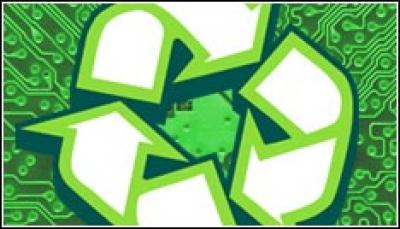Speaker maker Sonos is facing criticism for its recycling scheme that sees useable devices being bricked, and turned into a piece of unusable components.
The problem concerns the trade-in program for older Sonos speakers. Any customer with older Sonos speakers can trade up to a newer Sonos speaker with a 30 percent discount.
In order to do this however, users must activate a ‘Recycle Mode’ through the Sonos app, which after three weeks will brick the old Sonos device – a process that adds to the e-waste problem most countries experience.
![]()
Bricking devices
The turning of a working device into a bricked lump has triggered angry reactions in the last week. Indeed, the irreversible kill switch for a discount is been harshly criticised as a bad deal for the environment.
In particular, Sonos was identified on Twitter by Devin Wilson for its practices around sustainability.
“Sonos states on their website that ‘sustainability is non-negotiable,’ and that they design products to minimize impact, but I work at an e-waste recycler and have demonstrable proof this is false,” he tweeted. “Sonos’s ‘recycle mode’ intentionally bricks good devices so they can’t be reused.”
Essentially, when a Sonos user decides to get the discount by enabling the ‘recycling’ mode on the app, they are provided a discount code. But at the same time this also starts a 21-day countdown timer on their older speaker – ending up with it being ‘permanently deactivated’.
This means that all data on the device is erased and the speaker is bricked, preventing it from being resold or reused in the future.
After all it makes perfect sense to wipe user data from a device, but a factory reset would accomplish the same end result and preserve the possibility of reuse, the Verge reported.
eWaste Issue
The Verge reached out to Sonos and it said it was concerned about very old devices finding their way to new owners who might not realise that the products aren’t cut out for some aspects of the modern Sonos experience.
“The reality is that these older products lack the processing power and memory to support modern Sonos experiences,” the firm told the Verge. “Over time, technology will progress in ways these products are not able to accommodate. For some owners, these new features aren’t important. Accordingly, they may choose not to participate in the Trade Up program.”
“But for other owners, having modern Sonos devices capable of delivering these new experiences is important,” it said. “So the Trade Up program is an affordable path for these owners to upgrade. For those that choose to trade-up to new products, we felt that the most responsible action was not to reintroduce them to new customers that may not have the context of them as 10+ year old products, and that also may not be able to deliver the Sonos experience they expected.”
But this last sentence could apply to any old, but still working electronic device.
And this doesn’t negate the ongoing problem caused by consumer electronics going to waste.
Tony Roberts of Computer Aid International has previously told Silicon UK that every country should have the political will to outlaw all dumping of electronic waste.
The charity has also previously called for ICT manufacturers to take responsibility for the environmental cost of their products throughout their entire life-cycle, in every country they operate in.
Quiz: Test your knowledge of renewable energy in IT





